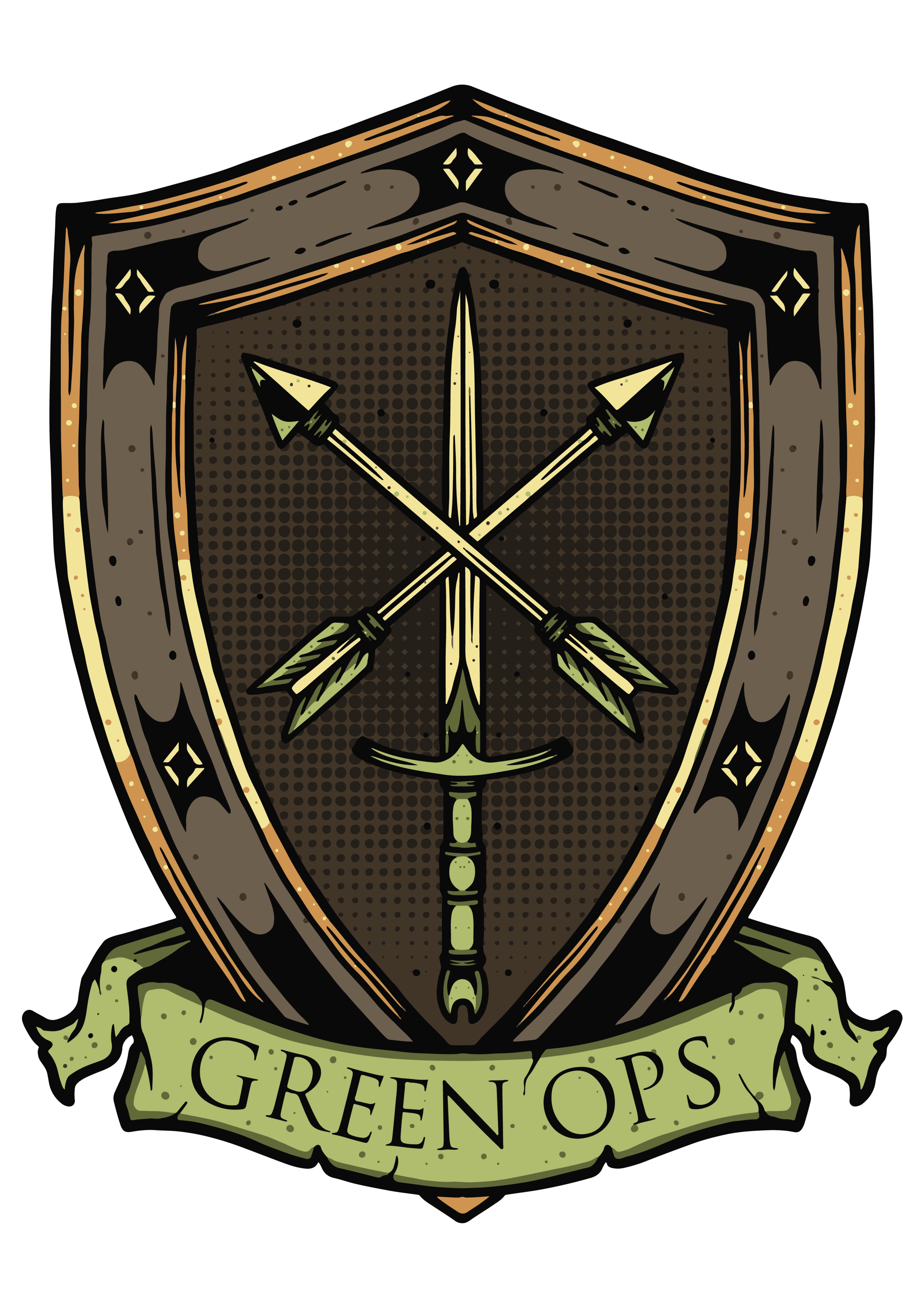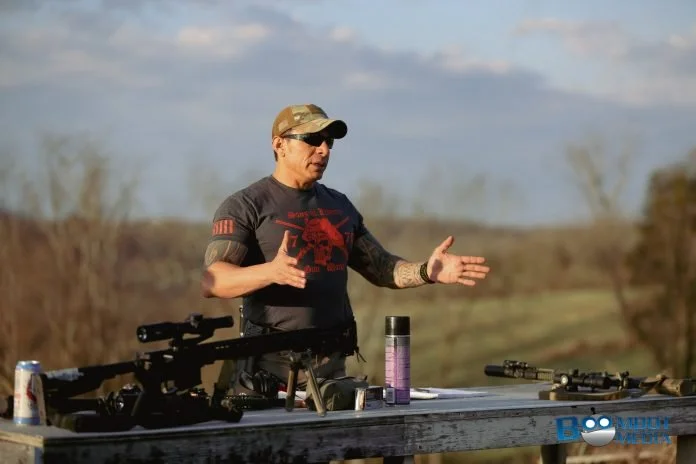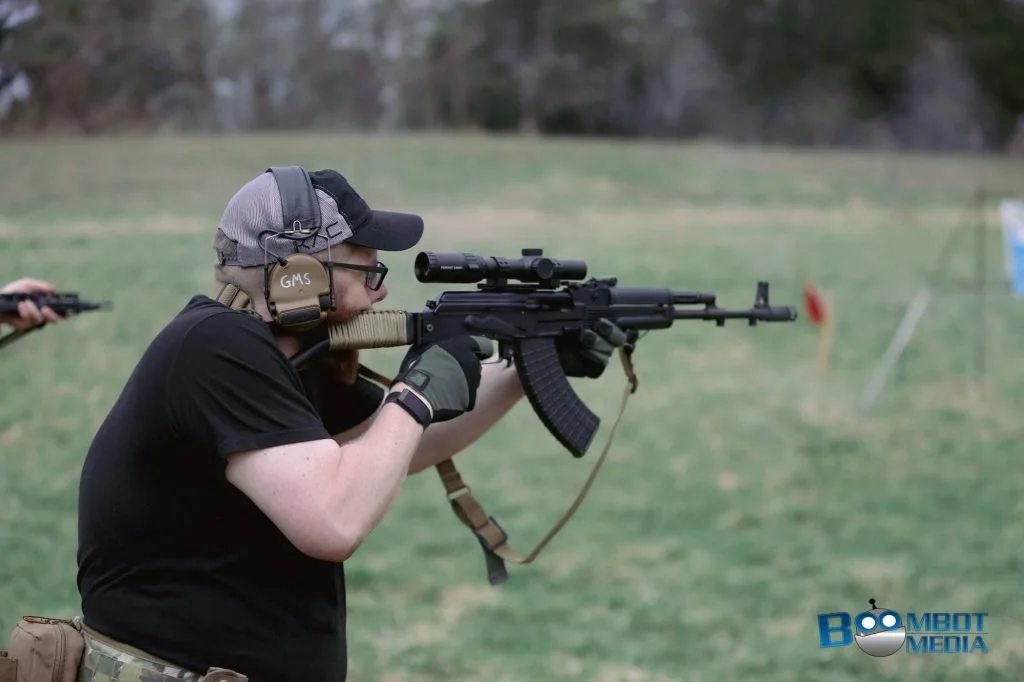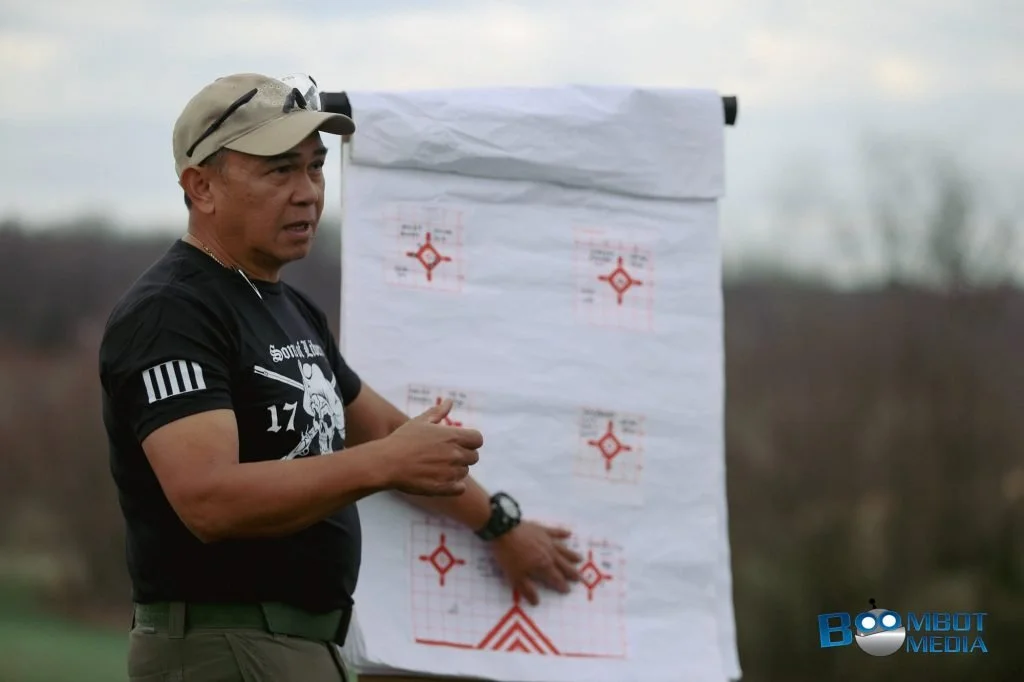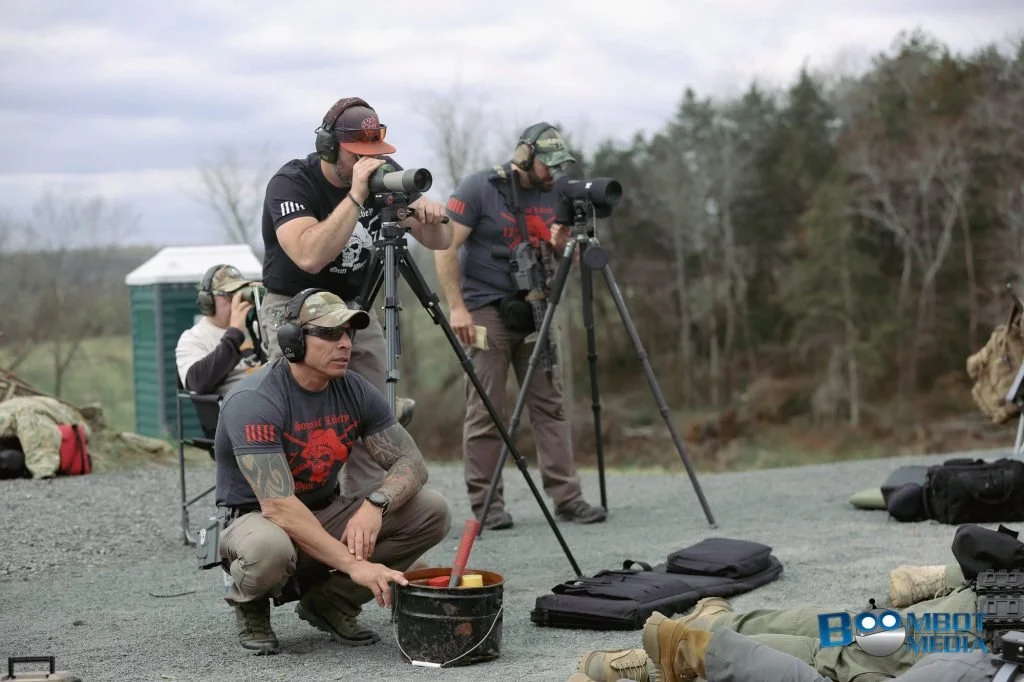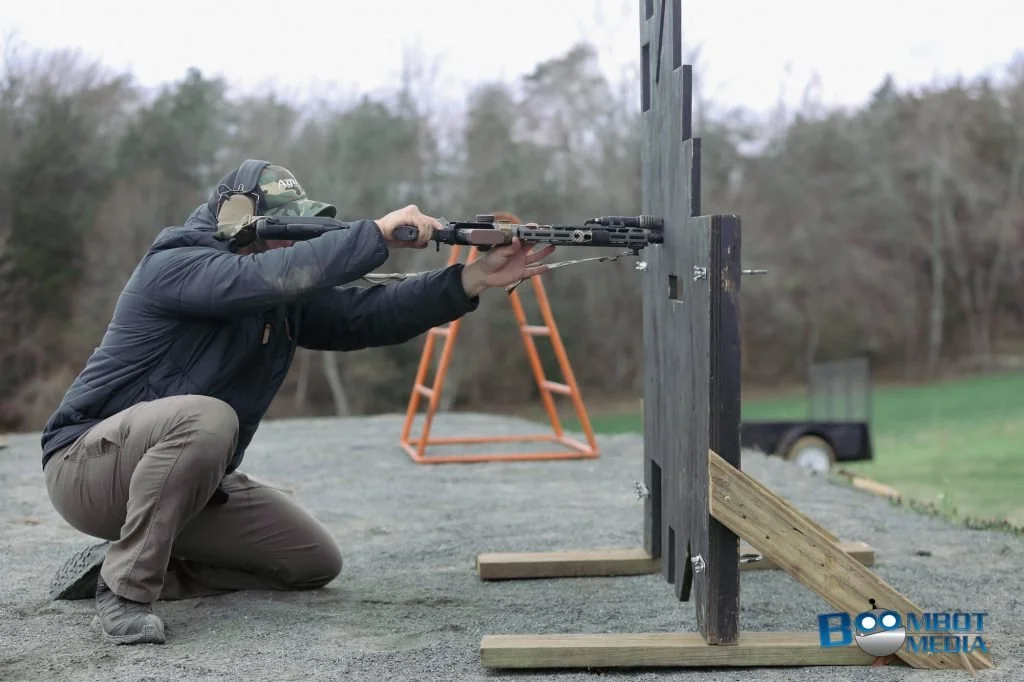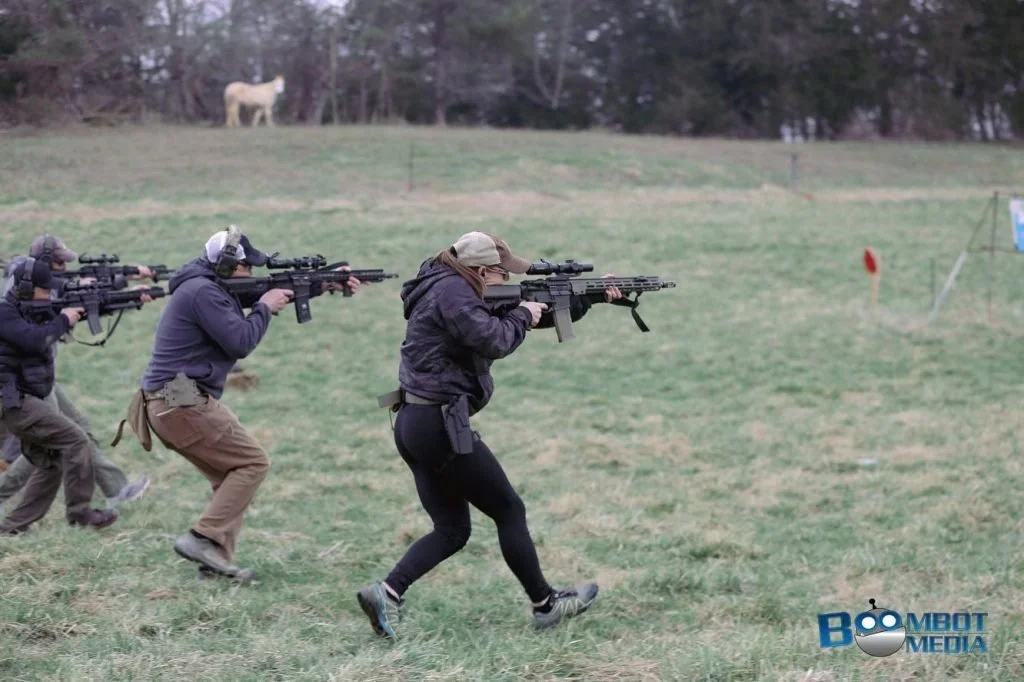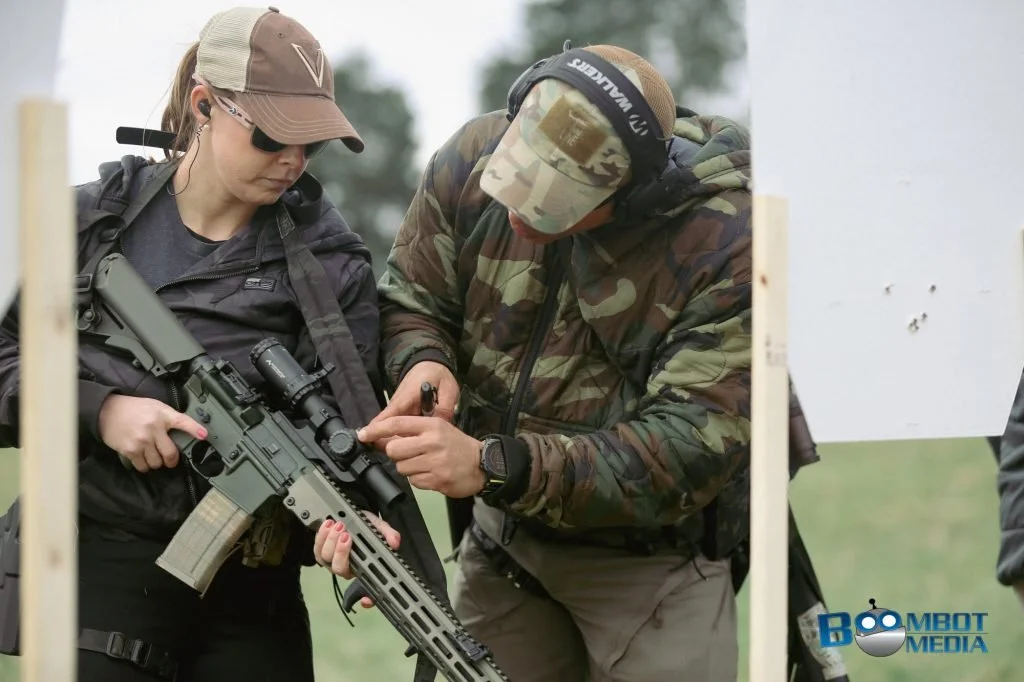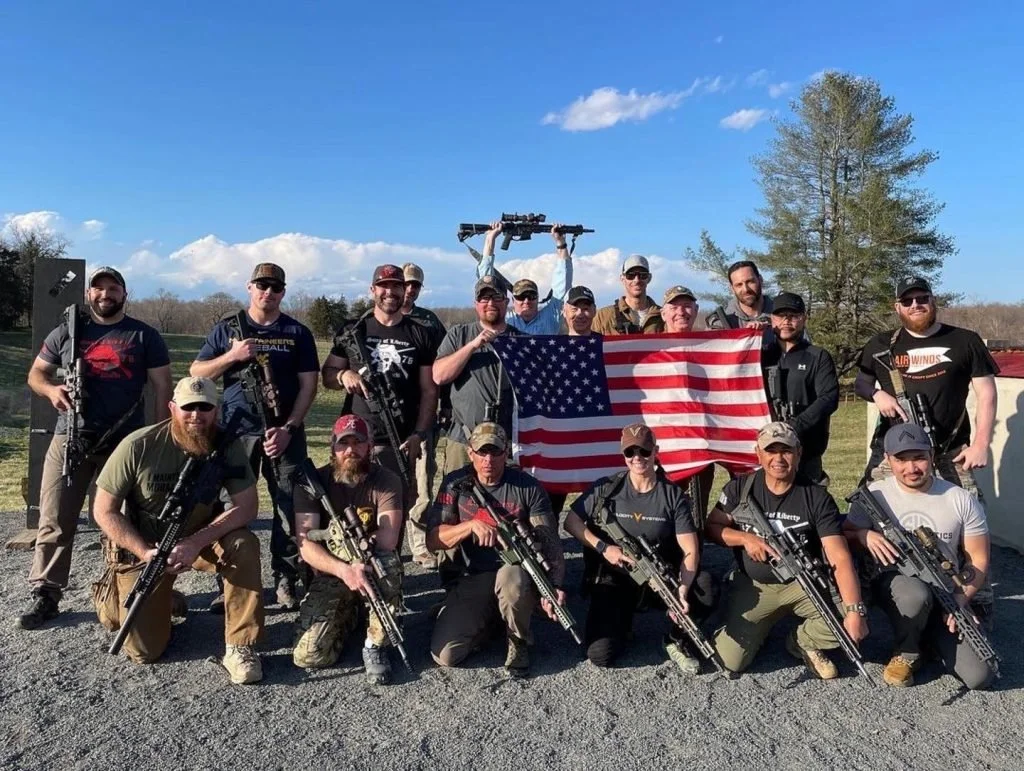AAR for GATDaily.com (Low Power Variable Optic - LPVO)
Green Ops, a Northern Virginia and Texas firearms training company, is one of the only training companies that teaches a specific Low Powered Variable Optic driven course. A student goes over his experience at the course, what he got out of it, and what you can prepare for when you attend.
AAR originally posted at www.gatdaily.com
Green Ops 19MAR22 Low Powered Variable Optic AAR
Disclosure: As an alumnus of previous Green Ops courses, I was offered attendance in this class at a substantial discount in exchange for writing and posting an AAR, which I wrote on my own. I was asked to provide honest feedback, which I will do as I strive to report my experience with integrity.
Synopsis: This class is designed for intermediate level shooters looking to learn the skills and gain experience using a carbine or rifle with an LPVO out to 500-600 yards.
I will break my AAR down into the following sections: Class Description, My Background, My Equipment, Instruction, Student Experience and Feedback. This was an intermediate/advanced course and covered a lot of ground. I will do my best to keep this AAR concise.
Class Description: (as posted on the Green Ops website here https://www.green-ops.com/low-power-variable-optics-8-hrs):
“The LPVO Class is a 1-day tactical firearms training with the purpose of exploiting the LPVO to its maximum capability. Shooters will be challenged by executing various courses of fire (COF) testing their ability to employ the LPVO from CQB to combat engagement distances. Additionally, shooters will be trained to gain the most advantageous position to exploit the LPVO’s unique capabilities. The culminating exercise will allow shooters to appraise best practices by conducting a fire and maneuver COF engaging targets at varying distances.
This course is for shooters with carbine platforms equipped with low powered variable power optics (LPVO) (1-6X through 1-10X) who want to know what it takes to get accurate first round impact on targets beyond 100 yards. It is also for those of you who have higher capability rifle platforms with optics of higher magnification. The fundamentals of precision accuracy will be presented.
The culminating exercise is a 2-man live fire exercise that requires running and gunning”
My Background: I have attended Defensive Carbine I and Defensive Kalashnikov classes offered by Green Ops in the past, so I have some recent and relevant training which prepared me for this course. I attended US Army Basic Training in 2004 where I had been instructed on a few of the concepts used covered in this course, but did not get live fire experience past the basic rifle marksmanship qualification and familiarization with infantry weapons. In short, it had been a LONG time since I have received formal instruction on shooting a rifle to 300m and beyond.
I am a professional gunsmith and have specialized in maintaining, customizing and building handguns, carbines, shotguns and rifles for law enforcement, defensive, sporting and hunting use over the past 12 years. I understand how to put guns together properly, make them work when they have issues and install optics and accessories properly for use in various roles. I have competed in IDPA and GSSF matches as I have always lived in suburban areas, yet I have always wanted to learn to effectively shoot further out with a rifle. In my shift from primarily building/collecting guns over the past 20 years to training and competing – this LPVO course presented a perfect opportunity to test my current skill set and learn more. My range access is limited mostly to indoor ranges which severely limits my opportunities to do much more than function test, zero and conduct close work drills.
The writer of the AAR with his equipment doing some shooting on the move drills.
My Equipment: The rifle I selected is an Arsenal SAM7SF chambered in 7.62x39mm. I am an AK enthusiast, and I consider this the “Cadillac” of 7.62 rifles currently on the market today. I bought this rifle as it has a milled receiver and I felt it would be the best AK-platform candidate for an LPVO. I have been shooting 7.62×39 primarily over the past 2 years as the COVID situation placed 5.56 and 9mm out of my budget for anything but occasional shooting. I have a Primary Arms SLx 1-6×24 FFP scope with the ACSS RAPTOR reticle, calibrated for 124gr 7.62x39mm ammunition. It is mounted with Warne steel rings to an RS Regulate side mounting system.
The rifle and optic performed flawlessly with zero malfunctions or problems. I did not use the illumination on my optic’s reticle as it gets kind of lost in bright light, and I was able to shoot all day in sunny and cloudy conditions with the “unlit” etched reticle. Despite using Wolf 122gr ammo, the BDC worked correctly.
Instruction: I feel there are 5 distinct portions of the class and will break them down individually here.
Safety: As the most important aspect of using firearms, especially around other people – safety was covered and stressed at all points of the class. The day began with a safety briefing and a description of what students and instructors would be doing, along with outlining emergency plans in the event of any injury or training accident. I have always felt comfortable at all Green Ops courses as there is a high instructor/student ratio. Not only is this important for learning, it is crucial to have instructors who are acting as safety officers the entire time.
Ballistics: After the safety briefing, we received instruction from Max, Chris and Josh on the role of the LPVO-equipped rifle – which in short is neither a dedicated CQB weapon or precision/sniper platform, but a carbine/rifle which can be used effectively in competition or combat use from zero to 500-600 yards. The instructors demonstrated the importance of zeroing a rifle with the ammunition that will be used, and why zeroing is not a “set it and forget it” task. They explained the importance of testing ammo and confirming zero often, as each barrel/rifle performs differently than the next. Every shooter must know their equipment and how it behaves (and reliably matching POA to POI at the zero distance) in order to be an effective shooter outside of the 50 yard lane at the local range. The final portion of instruction here was discussing wind drift, and holding or dialing the optic to compensate for its effects. This would become a major part of the class, as it got pretty windy as the day continued.
Max Delo, an instructor, goes over how different bullets will group dependent on bullet weight, factory vs match ammo, etc.
Equipment Setup: In this portion of the class, the Green Ops cadre explained the different things people do with their LPVO-equipped rifles and offered their suggestions. The most important part of this portion of the class was discussion of the LPVO itself. Different reticles were discussed briefly, but as this largely boils down to user preference, valuable time wasn’t spent on this feature. The importance of proper and LEVEL mounting of optics was stressed as being congruent with a proper zero. The pros and cons of popular zero distances (36 yard, 25-300m, 50/200 yard, and 100 yard) for 5.56 were discussed. For LPVOs with a BDC reticle, there was a strong recommendation for shooters to read and understand the LPVO manufacturer’s instructions as they will usually have one zero distance specified which is known to work well with that reticle and a particular load. I appreciate that as a gunsmith, as a lot of issues people have with guns and optics are clearly explained in the operator/instruction manual!
Fundamentals of Shooting: Once the “classroom” portions of the course were completed, the class moved to the range to confirm zero. Next, students were run through close range drills. We were encouraged to try these drills at varying magnifications to get a feel for shooting at low power (2x-3x) vs 1x. Once the class was warmed up and had demonstrated proficiency to the instructors, we moved back to the primary firing line to begin longer distance engagement.
It had been pretty breezy throughout the morning but by this time the winds were blowing at 15-25mph, mostly from behind moving downrange. Instructors set up spotting scopes as students laid out mats, shooting rests/bags and sandbags. Next, the class began ranging targets downrange with the assistance of instructors as needed. Students were encouraged to draw range cards so they had a reference to landmarks, targets and their various distances. The instructors also had put stakes with streamers downrange to act as wind speed/direction indicators, which was extremely helpful as we were dealing with constantly shifting and swirling wind. They also covered how to look at moving grass, leaves, dust and trees to visually estimate wind speed on the fly. Using the ACSS reticle I was able to accurately range the IPSC/USPSA shaped targets out to 600 yards. This was one of those eye-opening experiences when things I have read or heard described over the years began to click for me.
Once range cards were drawn up, the squads rotated through a few cycles of shooting on the line with instructors and other students spotting, and either coaching shooters on their targets or just observing and watching for splash, impacts, misses etc. The high instructor/student ratio and shooting in squads made this easy, and I definitely got the one-on-one help I needed to get comfortable hitting targets. As we were wrapping up, on my last turn on the line I engaged a steel ram target placed at 600 yards. It took some work, but if I remember correctly after 4-5 near misses I was finally landing some hits. From 600 yards. With a damn AK. What a great feeling! I was very confident on 300-350 yard targets at 1x-3x magnification, which is a great place to be with a defensive carbine.
The instructors spotting for the students during a modified prone long range shooting portion of the LPVO class.
Practical Exercises: Students got practice shooting at distant targets from behind and around different barricades, including the venerable VTAC barricade. We were briefed on muzzle awareness, being sure to actually shoot over/around and not into/through any cover or concealment we might be shooting from. Instructors also encouraged us to shoot from the horizontal slots in the middle/bottom of the VTAC after briefing us on how to use optics with canted rifles. This was difficult as it’s something I had never done before, and had varying success with (mostly misses). I will definitely be working on this on my own as I need to up my proficiency with this particular skill.
Josh Shaw, an instructor, goes over how to hold towards the magwell when shooting with the gun tilted sideways on a barricade.
Next up was two-person team drills, where students communicated their positions when moving near/around/behind each other as well as when reloading. This was practiced over and over until students were proficient and instructors were satisfied everyone could perform these drills safely. The final exercise was a mock recovery mission where two students at a time would bound laterally and downrange while engaging targets, covering each other or lifting fire as necessary to move towards the objective. This is something I won’t go into a lot of detail about as I don’t want to delve into all the nuances of the mock mission, target arrangements etc., but I will say this was an exercise that required a high degree of skill and an even higher standard of safety than anything I’ve experienced to date. It was challenging and a lot of fun, but most of all it speaks volumes about the skill of the students who attended, as well as the attention of the instructor cadre to feel comfortable conducting such training. I have attended a previous course taught by Green Ops where the curriculum was adjusted to suit the level of the less-experienced students – which is what I want to see. I would rather be in a class where instructors reduce the difficulty of a course to the abilities of the students than to push people into potentially unsafe situations they can’t handle. At this LPVO course, I felt very fortunate to be on the firing line with other shooters who I felt completely safe around and observed shooting at the same level, with attentive staff who do not compromise on safety standards.
Students do shooting on the move drills.
Student Experience: If it’s not clear by my verbose description of the course, there was a lot of ground covered. I had never engaged a target beyond 400 yards before attending this course, never drawn up a range card, never participated in live fire shooting/moving with a partner or bounding exercises. As a student I enjoyed being led by instructors through the transition from studying the theory of medium-range shooting to real experience of shooting up to 600 yards with wind. This was personally one of my favorite parts of the class, as I had read about all these fundamentals countless times but hadn’t been on such a large range with varying targets and terrain features since attending Army Basic as an 18 year-old who had never shot a centerfire rifle before. It’s a great feeling, and really is the reason why I attend training like this – to make sense of what works in the real world and put all the fudd lore and internet rumors to bed as I become more proficient and confident with my own equipment and shooting abilities. The instructors at Green Ops don’t waste time telling sea stories, joking around too much (a bit of humor is important of course) or going into detail on concepts or practices that don’t matter. I feel they are a solid group to seek instruction from and would not hesitate to recommend them to friends and family – as I already have done and will continue to do. At every class, I’ve been pushed to perform at a higher level, shoot faster and more accurately than I thought was possible for me, sometimes with some failures on my part (which is a vital part of learning) – but never in an unsafe manner. I consider Green Ops courses to set the bar for what I expect when attending shooting courses.
Chris Alvarez, an instructor, talks about the turret adjustments on a students LPVO.
Feedback: I really have no bones to pick with anything about the LPVO course. If anything, I would say that it might be helpful for some students to offer a separate LPVO build/setup clinic which delves more deeply into the setup of a carbine/rifle for this role. I think every student walks away from a class learning that they need to make a few tweaks to their setup, either on the rifle or with their gear (belt, mag pouches, mags etc) – but an intro level course would be helpful to many who may not feel prepared to sign up for the full course. I am looking forward to either taking this course again at a later time (likely with an AR platform), or attending an LPVO II course for graduates of level I (or comparable training). I would absolutely want to attend an advanced course which gets students more time with the practical exercises, teaches some more advanced skills including spotting for a buddy shooter and potentially introduces some timed competition stages.
If you missed it, make sure you sign up for the next one:
—VIRGINIA—*Jun 5: Culpeper, VA / Sold Out. Email us to get on the waiting list
*Sept 3 & 4: Culpeper, VA / Half way Full
—TEXAS—*Jun 11&12: San Antonio, TX area / Half way Full
https://www.green-ops.com/schedule-registration
Special thanks to Boombot Media for coming out and training with us. The photos are all accredited to him.
